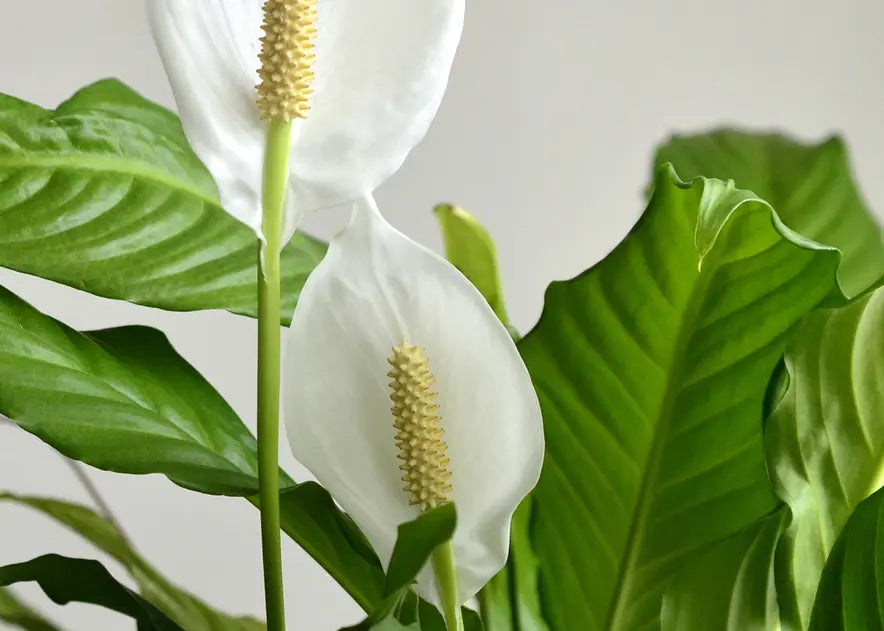
Plants 101
How to Care for a Peace Lily
Learn how to create the best growing conditions for a Peace Lily.

Peace lilies, scientifically known as Spathiphyllum, are popular houseplants cherished for their graceful beauty and air-purifying qualities. With glossy, dark green leaves and elegant white flowers, they add a touch of serenity to any space. The plant's common name, "peace lily," is derived from its white, flag-like flowers resembling the white flag of peace.
Peace lilies are native to the tropical rainforests of Central and South America, and belong to the Araceae family being closely related to popular houseplants like Philodendrons and Anthuriums. These plants are easy to care for and can thrive in a variety of indoor environments. Here's what you need to know to keep your peace lily healthy and happy:

Sunlight
Peace lilies prefer bright, indirect light but can tolerate lower light conditions. Avoid direct sunlight, as it can scorch the leaves unless it's morning sun coming which they will enjoy.
An East or West window would be ideal, but a diffused South window can also work as long as it the plant doesn't receive afternoon direct sunlight. While they can tolerate lower light from a North window it may hinder the plants ability to produce flowers.
Not sure if your space will provide enough light? Consider measuring light to ensure your Peace Lily will receive enough!
Water
Keep the soil moist, but not waterlogged. Peace lilies can be sensitive to overwatering, so allow the soil to mostly dry out before watering again. You can utilize a moisture meter to help you properly gauage soil moisture and avoid overwatering!
Humidity
Peace lilies will enjoy higher humidity, but can tolerate normal room humidity levels. You can increase humidity by placing a wet pebble tray under the plant or by using a humidifier. Not sure if humidity is high enough? You can measure the level of humidity with a hygrometer or LTH meter.
Temperature
Peace lilies prefer temperatures between 65-80°F (18-27°C). Avoid placing them in areas with cold drafts or temperatures below 55°F (13°C).
Soil
Any standard, well-draining potting mix that retains moisture and is rich in nutrients works great for the Peace Lily. You can also add perlite to improve drainage if needed.
Common Problems
While peace lilies are relatively easy to care for, they can still experience some common issues. Here are some symptoms and causes to look out for:
SYMPTOM: Wilting, dry potting mix
CAUSE: Thirsty plant, underwatered
SYMPTOM: Yellowing and mushy leaves, wet potting mix
CAUSE: Overwatered
SYMPTOM: Lack of blooms
CAUSE: Low light or low humidity
Precautions
While peace lilies are generally safe to grow in the home, Peace lilies contain calcium oxalate crystals, which can be toxic if ingested. Keep them out of reach of children and pets.

Words By The Sill
Empowering all people to be plant people—a collection of articles from The Sill's team of plant experts across a variety of plant care topics to inspire confidence in the next generation of plant parents. Welcome to Plant Parenthood™.
Do Some Plant Shopping